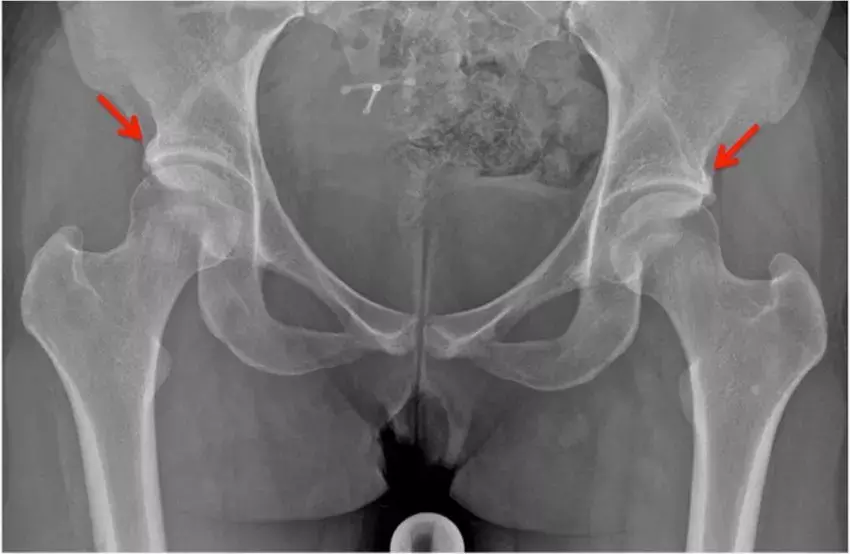- Home
- Medical news & Guidelines
- Anesthesiology
- Cardiology and CTVS
- Critical Care
- Dentistry
- Dermatology
- Diabetes and Endocrinology
- ENT
- Gastroenterology
- Medicine
- Nephrology
- Neurology
- Obstretics-Gynaecology
- Oncology
- Ophthalmology
- Orthopaedics
- Pediatrics-Neonatology
- Psychiatry
- Pulmonology
- Radiology
- Surgery
- Urology
- Laboratory Medicine
- Diet
- Nursing
- Paramedical
- Physiotherapy
- Health news
- Fact Check
- Bone Health Fact Check
- Brain Health Fact Check
- Cancer Related Fact Check
- Child Care Fact Check
- Dental and oral health fact check
- Diabetes and metabolic health fact check
- Diet and Nutrition Fact Check
- Eye and ENT Care Fact Check
- Fitness fact check
- Gut health fact check
- Heart health fact check
- Kidney health fact check
- Medical education fact check
- Men's health fact check
- Respiratory fact check
- Skin and hair care fact check
- Vaccine and Immunization fact check
- Women's health fact check
- AYUSH
- State News
- Andaman and Nicobar Islands
- Andhra Pradesh
- Arunachal Pradesh
- Assam
- Bihar
- Chandigarh
- Chattisgarh
- Dadra and Nagar Haveli
- Daman and Diu
- Delhi
- Goa
- Gujarat
- Haryana
- Himachal Pradesh
- Jammu & Kashmir
- Jharkhand
- Karnataka
- Kerala
- Ladakh
- Lakshadweep
- Madhya Pradesh
- Maharashtra
- Manipur
- Meghalaya
- Mizoram
- Nagaland
- Odisha
- Puducherry
- Punjab
- Rajasthan
- Sikkim
- Tamil Nadu
- Telangana
- Tripura
- Uttar Pradesh
- Uttrakhand
- West Bengal
- Medical Education
- Industry
Radiographic Pincer Morphology Not Associated With Hip Osteoarthritis, Reveals Study

Radiographic Pincer Morphology Not Associated With Hip Osteoarthritis, reveals study published in the Arthritis Care and research.
The objective of this study was to assess the relationship between pincer morphology and radiographic hip osteoarthritis (RHOA) over 2, 5, 8, and 10 years’ follow-up and to study the interaction between pincer morphology and pain. Individuals from the prospective Cohort Hip and Cohort Knee study were drawn. Anteroposterior pelvic and false profile radiographs were obtained. Hips free of definite RHOA (Kellgren and Lawrence [KL] grade 0 or 1) at baseline were included. Pincer morphology was defined as a lateral or anterior center edge angle or both ≥40° at baseline. Incident RHOA was defined as KL ≥ 2 or total hip replacement at follow-up. Multivariable logistic regression with generalized estimating equations estimated the associations at follow-up. Associations were expressed as unadjusted odds ratios (ORs) and adjusted ORs with 95% confidence intervals (CIs).
An interaction term was added to investigate whether pincer morphology had a different effect on symptomatic hips. Results: Incident RHOA developed in 69 hips (5%) at 2 years’ follow-up, in 178 hips (14%) at 5 years’ follow-up, in 279 hips (24%) at 8 years’ follow-up, and in 495 hips (42%) at 10 years’ follow-up. No significant associations were found between pincer morphology and incident RHOA (adjusted OR 0.35 [95% CI 0.06–2.15]; adjusted OR 1.50 [95% CI 0.94–2.38]). Significant interactions between pain and anterior pincer morphology in predicting incident RHOA were found at 5, 8, and 10 years’ follow-up (OR 1.97 [95% CI 1.03–3.78]; OR 3.41 [95% CI 1.35–8.61]). No associations were found between radiographic pincer morphology and incident RHOA at any follow-up moment. Anteriorly located pincer morphology with hip pain, however, was significantly associated with incident RHOA. This highlights the importance of studying symptoms and hip morphology simultaneously.
Reference:
Riedstra, N.S., Boel, F., van Buuren, M., Eygendaal, D., Bierma-Zeinstra, S., Runhaar, J. and Agricola, R. (2024), Pincer Morphology Is Not Associated With Hip Osteoarthritis Unless Hip Pain Is Present: Follow-Up Data From a Prospective Cohort Study. Arthritis Care Res. https://doi.org/10.1002/acr.25285
Dr. Shravani Dali has completed her BDS from Pravara institute of medical sciences, loni. Following which she extensively worked in the healthcare sector for 2+ years. She has been actively involved in writing blogs in field of health and wellness. Currently she is pursuing her Masters of public health-health administration from Tata institute of social sciences. She can be contacted at editorial@medicaldialogues.in.
Dr Kamal Kant Kohli-MBBS, DTCD- a chest specialist with more than 30 years of practice and a flair for writing clinical articles, Dr Kamal Kant Kohli joined Medical Dialogues as a Chief Editor of Medical News. Besides writing articles, as an editor, he proofreads and verifies all the medical content published on Medical Dialogues including those coming from journals, studies,medical conferences,guidelines etc. Email: drkohli@medicaldialogues.in. Contact no. 011-43720751


